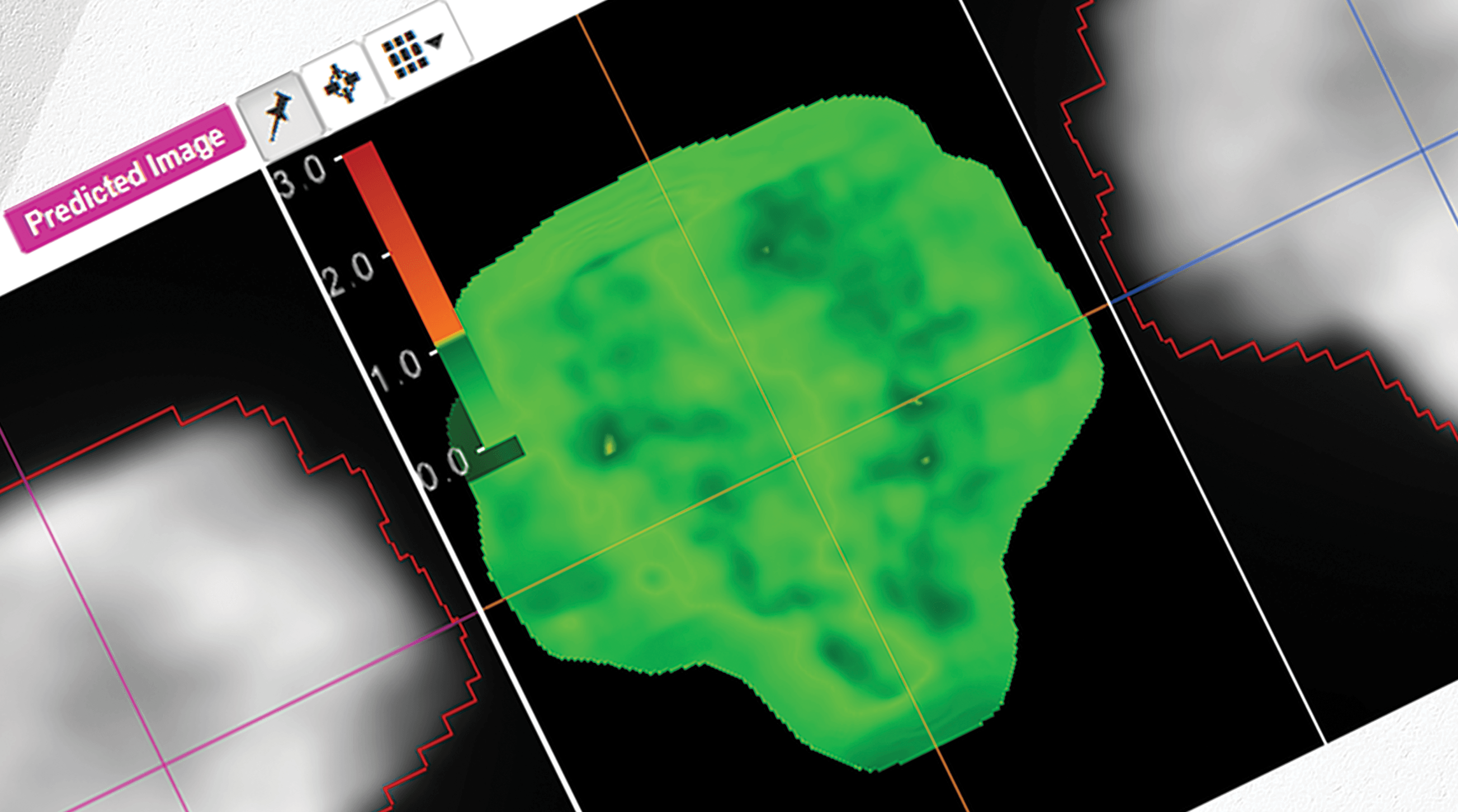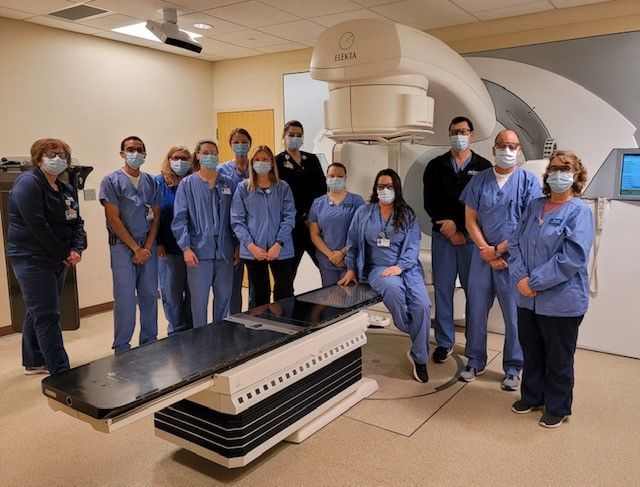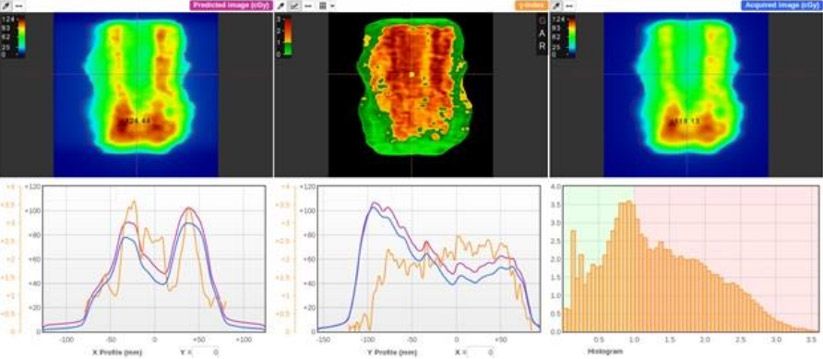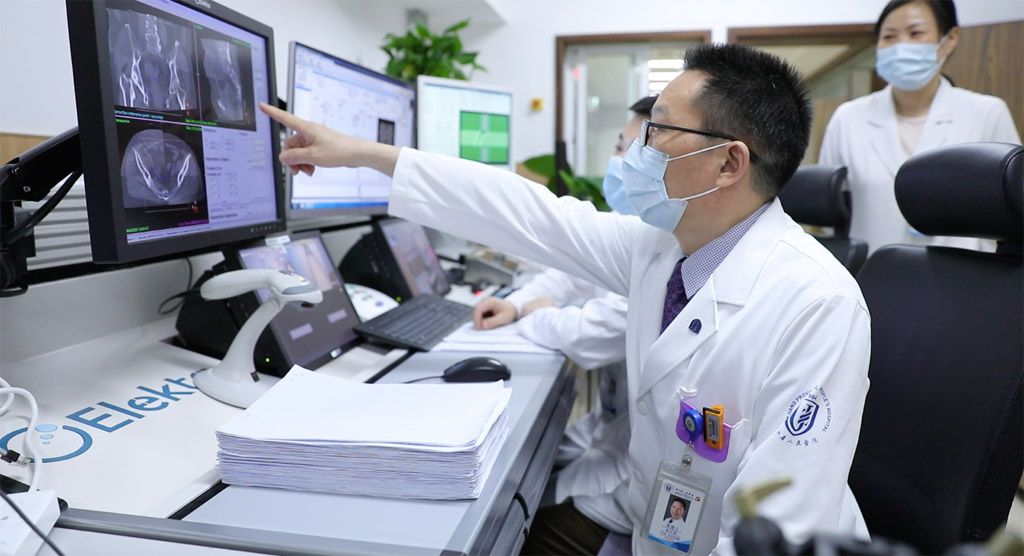Save time and increase confidence with Elekta Patient QA Solutions

Pre-treatment QA reduces the need for after hours working as well as improves spatial resolution for small targets

There are two beam-matched Elekta Infinity™ linacs at the Minneapolis Radiation Oncology (MRO) North Memorial Radiation Therapy Center and pre-treatment QA is performed for around 30 VMAT plans per week across both linacs. In the past, this was achieved using a conventional phantom/3D detector based method, which was very time consuming. It required 6-8 hours of physicist time every week and had to be performed out of hours so as not to interfere with patient scheduling.
“VMAT is used in around 60% of our total workload,” comments Dr. Raj Varadhan, Director of Physics Technology at MRO. “We are required to perform pre-treatment QA for all IMRT and VMAT plans, and we follow the recommendations provided by AAPM TG-2181.
“The main motivation for switching to a portal dosimetry-based system, is the ease of use and huge time savings it offers physicists, without sacrificing quality.”
“Our previous 3D phantom-based QA method was very laborious, requiring physicist time to create a QA plan, set up the phantom/3D detector, deliver the plan and perform the analysis,” he continues. “The main motivation for switching to a portal dosimetry-based system, is the ease of use and huge time savings it offers physicists, without sacrificing quality.

The Elekta solution* does not require preparation of an additional QA plan on the TPS or the use of a phantom. The patient plan is simply delivered to the Electronic Portal Imaging Device (EPID) panel. The delivered dose is then calculated and compared to the planned dose, ensuring correct dose delivery, correct MLC and linac functioning, and the integrity of data transfer before the patient’s first fraction. In addition, the iViewGT™ panel has an active imaging area of 41 × 41 cm and the image matrix is created from an array of 1024 × 1024 photodiodes with a pitch of 400 μm. As a result, this solution offers better spatial resolution than traditional phantom/3D detector-based methods.
“Phantom-based QA may not be optimal for very small fields because the detectors are usually spaced 5-10 mm apart,” Dr. Varadhan explains. “We were attracted to the increased spatial resolution that portal dosimetry offers for small target volumes. This is particularly beneficial for procedures such as brain SRS.”
Evaluating the Elekta solution
“Since we had never performed EPID based dosimetry on our Elekta linacs before,” Dr. Varadhan continues, “we decided to evaluate the solution to assess its suitability to perform VMAT QA on the Elekta platform and its sensitivity to detect introduced MLC errors2.”
Implementation, beam modelling and commissioning were carried out over two weeks prior to the evaluation. The purpose of the evaluation was to verify the accuracy of EPIbeam, which is based on a novel convolution/superposition algorithm, compared to a traditional 3D array detector system (Delta4) for VMAT quality assurance.
Ten VMAT patient plans were randomly selected for the study, with an equal mix of 6 MV and 10 MV beam energies and with varying degrees of modulation. The software generates a ‘prediction model’ which reconstructs a 2D-dose map (5 cm depth in water at SAD level) from the treatment plan. This is compared to a ‘conversion model’ which is used to compute a 2D dose map (related to 5 cm depth in water at SAD level) from the iViewGT measured values. In this evaluation, the gamma pass rates, using global gamma criteria of 3%/2 mm, were greater than 95% for all plans (figure 1).

The results from the Elekta EPID based solution were compared to the results from the phantom-based method (figure 2). Overall, the gamma pass rates for the phantom-based method, using global gamma criteria of 3%/2 mm, were greater than 92.5% for all plans.

In addition, the sensitivity of EPIbeam to detect known MLC errors was investigated by introducing MLC offsets of 1 mm in both directions (‘in’ and ‘out’) for both leaf banks on the Agility™ MLC head. EPIbeam demonstrated its sensitivity to detect known MLC errors in the order of 2 mm (figure 3).
(a)

(b)

“Following the evaluation, we were satisfied that EPIbeam is suitable for pretreatment fluence verification and is comparable to the traditional 3D detector-based method for routine VMAT QA,” says Dr. Varadhan. “We will now transition all VMAT QA on our Elekta platforms within MRO to EPIbeam.”
Realizing the benefits
“The Elekta pre-treatment QA solution is extremely easy to use,” Dr. Varadhan comments. “Now, instead of requiring physicists to work after hours, the radiation therapists deliver the pre-treatment QA plans in the morning and the physicists then analyze the results, which is a more optimal solution.
“The Elekta pre-treatment QA solution is extremely easy to use.”
“EPID dosimetry is an efficient tool for routine patient IMRT/VMAT QA that can be performed in a far shorter timeframe than 3D detector-based measurements,” he concludes. “With the phantom-based method, a separate QA plan had to be created, which took around 10 minutes per patient. Then the phantom had to be set up correctly and all the leads connected before the plan could be delivered. We now save approximately 15-20 minutes per VMAT plan for pre-treatment QA, and we can use this time to prioritize our work better and to focus our attention on other important clinical tasks.”
Learn more about Elekta’s QA solutions, including EPIbeam.
References
- Miften, M, Olch, A, Mihailidis, D, et al. Tolerance limits and methodologies for IMRT measurement‐based verification QA: Recommendations of AAPM Task Group No. 218. Med Phys. 2018 Apr;45(4):e53-e83. doi: 10.1002/mp.12810.
- Varadhan, R, Way, S, Bedoya, M, Overbeck, C, et al. Evaluation of a Novel EPID Based Dosimetry System for Verification of VMAT QA in Comparison with Traditional 3D Detector Quality Assurance. Therapy general poster at AAPM Virtual Meeting 2020. PO-GeP-T-399. https://virtual.aapm.org/aapm/2020/eposters/302323/raj.varadhan.evaluation.of.a.novel.epid.based.dosimetry.system.for.html?f=listing%3D3%2Abrowseby%3D8%2Asortby%3D1%2Amedia%3D1
*The Elekta pre-treatment QA Solution is manufactured under partnership with DOSIsoft under the product name EPIbeam. EPIbeam may not be available in all markets.





